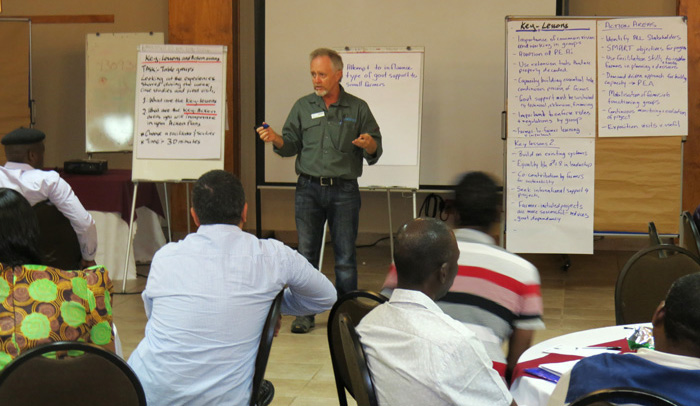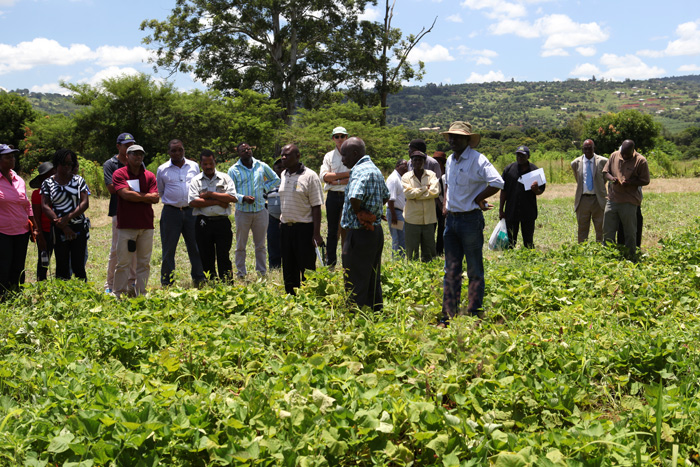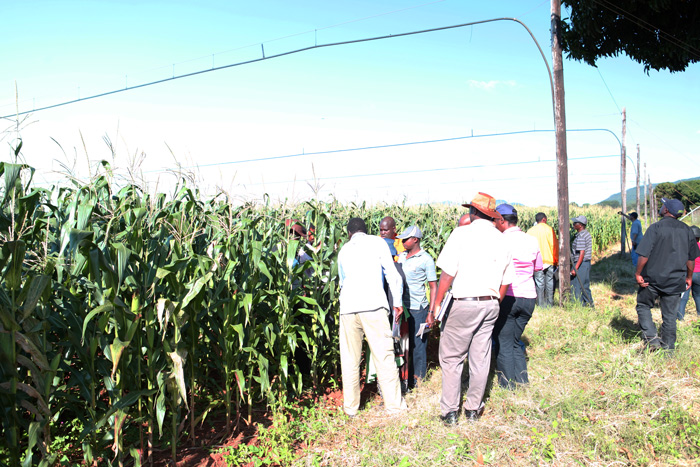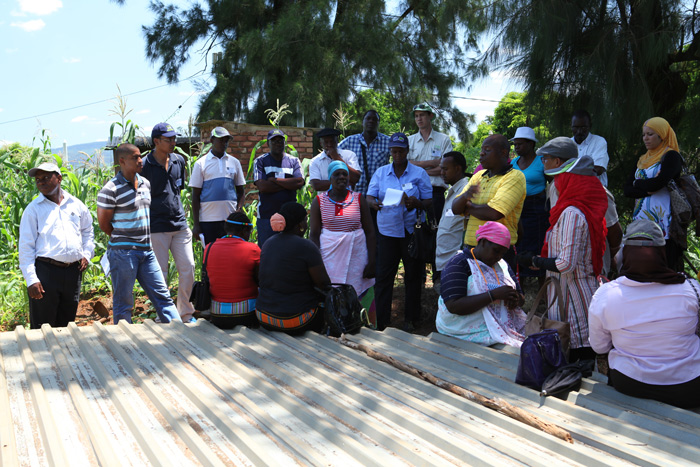In June 2016 Sally Peltzer & I attended Andina III – a 5 day weed workshop in southern Alberta organised by a range of weedies including the notable Roger Cousens, University of Melbourne and Sonia Graham, a social scientist from the University of NSW.
The workshop was held at the Gladstone Ranch near Pincher Creek, in the eastern foothills of the Canadian Rockies and was attended by 32 ‘natural’ and 'social' scientists, agronomists and consultants, from seven countries. Australians and North Americans made up the bulk of the participants.
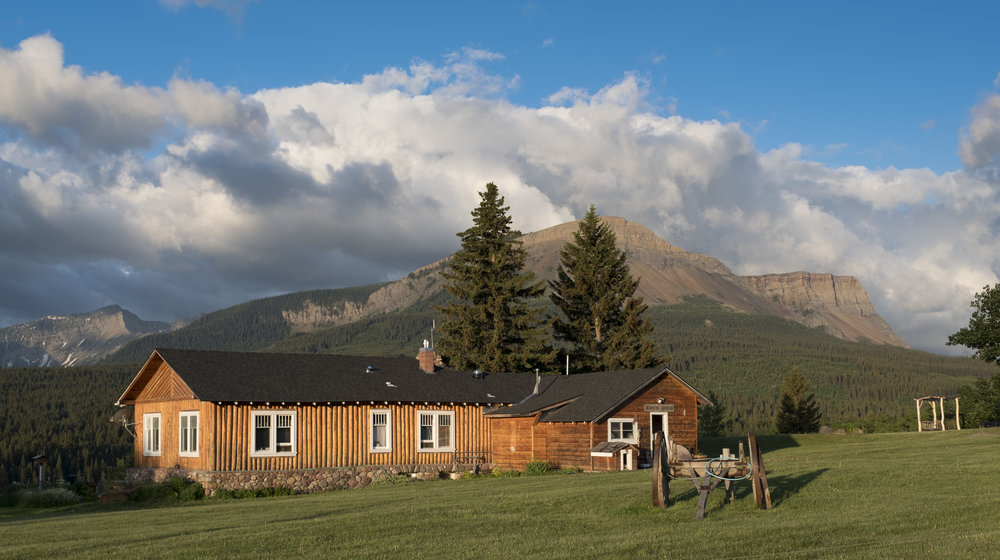 Gladstone Ranch homestead
Gladstone Ranch homestead
This was the third Andina workshop, with the first 2 taking place in Yellowstone National Park and Spain. Each conference has had a different theme. The theme for Andina III was “the transdisciplinary approach” to weed research and management and a few social scientists were thrown into the mix.
The general principle behind these get-togethers is to fill a perceived void left by traditional conferences by fostering international dialogue, collaboration and mentoring in a relaxed atmosphere. By spending 5 days together and doing a wide range of activities trust and relationships are built between the participants which will continue into the future once everyone has returned home to their normal lives and jobs.
So what is a "transdisciplinary approach"?
This was an interesting question because we asked “what is the difference between transdisciplinarity and a good research and extension program?” This was discussed at some length, for better or worse over the five days.
Integrative multidisciplinary research is thought to address complex real-world problems addressed systemically rather than as isolated problems. It involves harnessing scholarly and practical knowledge across many stakeholder groups such as scientists from different disciplines, private sector players, farmers, and extensionists at a range of geographic and political levels e.g. local, regional, landscape-wide.
 Some of the participants in a 'break-out' session.
Some of the participants in a 'break-out' session.
Multiple parties bring:
- a wide range of knowledge to address a complex problem.
- AND a diverse and often conflicting range of interests and views
Normally what happens in research is that researchers concentrate on research directions and objectives and tack on some publicity, such as a dry press release, or ill-planned extension at the completion of the research. This is the old top-down approach to research - we know what’s good for you so you should use our research findings....... and be grateful while you’re at it.
We tried to test the multi-disciplinary approach in southern Alberta by doing a fair amount of pre-workshop communication between workshop members as well as reading up on the issues facing the diverse range of land users in southern Alberta.
For us the most interesting case study we investigated was the Waldron Grazing Cooperative which:
- Is a collection of commercial cattle ranches (over 16,000 ha) under a single progressive manager
- It is a prime wildlife corridor for bears, cougars, elk, deer, coyote and moose
- Accesses land management funds for projects from Alberta Province and Federal Government, private donors and the co-operative.
- Has an agreement with the Nature Conservancy of Canada to protect the land in a state similar to that prior to white settlement, except running beef instead of bison.
- Makes the Waldron Coop an outlier with other beef ranchers in the area because they are seen as different because of their size and the way they access a range of external funds. This is then seen as the major reason why they can run above district average numbers of beasts and obviously has nothing to do with the pasture and grazing management being practised.
- Has leafy spurge (Euphorbia esula) as its major weed species. Leafy Spurge is a perennial with a spreading root system that isn’t eaten by cattle and has been spreading across North America since the early 1900s.
Mike the Walrond manager’s approach
 Mike, manager of the Waldron Cooperative, outlining his approach to range management.
Mike, manager of the Waldron Cooperative, outlining his approach to range management.
- Manage the grass first and the cattle second because without the grass you can’t fatten the cattle. Mike tries to emulate the grazing patterns of the bison with rotational grazing and lets the perennial grasses seed before winter to maintain species diversity in his pastures. Like in Australia most cattle ranchers set stock their pastures over summer leading to an increased density of leafy spurge, and a decline in species diversity and cattle weight gain.
- To manage the leafy spurge Mike uses a biocontrol agent that is a root-feeding beetle. Many other ranchers have also established this beetle on their leafy spurge infestations while others use an ‘unplanned’ herbicide program in an attempt to contain weed infestations.
- What is different with the Waldron Co-op is that they graze sheep (leased) on the spurge as well. We were told that the reason why the combination of biocontrol and grazing with sheep works so well was that the sheep disperse biocontrol agent. Interestingly no research has been conducted looking at the influence of defoliation in combination with the root feeding biocontrol. We thought that this is probably the reason why this combination works so well not the dispersal of the beetles. This is an excellent example where a multi-disciplinary approach to a problem would have paid off rather than leaving it to biocontrol specialists.
- It is interesting to note that there also is a VERY negative attitude towards the grazing of sheep in the general ranching community going back to the time when homesteaders moved into the Canadian rangelands leading to ‘range wars’.
- We thought that if you hate sheep, why not try a combination of slashing and biocontrol?
Unfortunately we did not meet any other ranchers that would be considered “typical”. The ranchers we sat down and discussed a weed management with were all organic beef growers. What all ranchers do seem to like doing is sit on a horse.
Canada has also experienced contraction of provincial agriculture departments with a reduction in production research and extension being available to landholders.
So what did we take home from Andina III?
- Andina is a great opportunity to meet a range of international researchers and get to know them having a great time while you’re at it.
- Multi-disciplinary approaches (which are hard to define – just read the peer reviewed papers on the subject) have merit because a number of the researchers we met did not work with anyone from outside their technical silo. Hmmmm. Several researchers said that they would not look at multi-disciplinary cooperation because it would not progress their career objectives i.e. pump out papers.
- Multidisciplinary teams seem an obvious approach for someone with an extension/research background but was a new concept for a number of the researchers.
If you get the opportunity to attend an Andina workshop it is well worth the effort. The next workshop is in Agentina in January 2018. This time the topic will be fundamental molecular biology through to mathematical modelling. For more information go to http://andina4argentina.weebly.com


